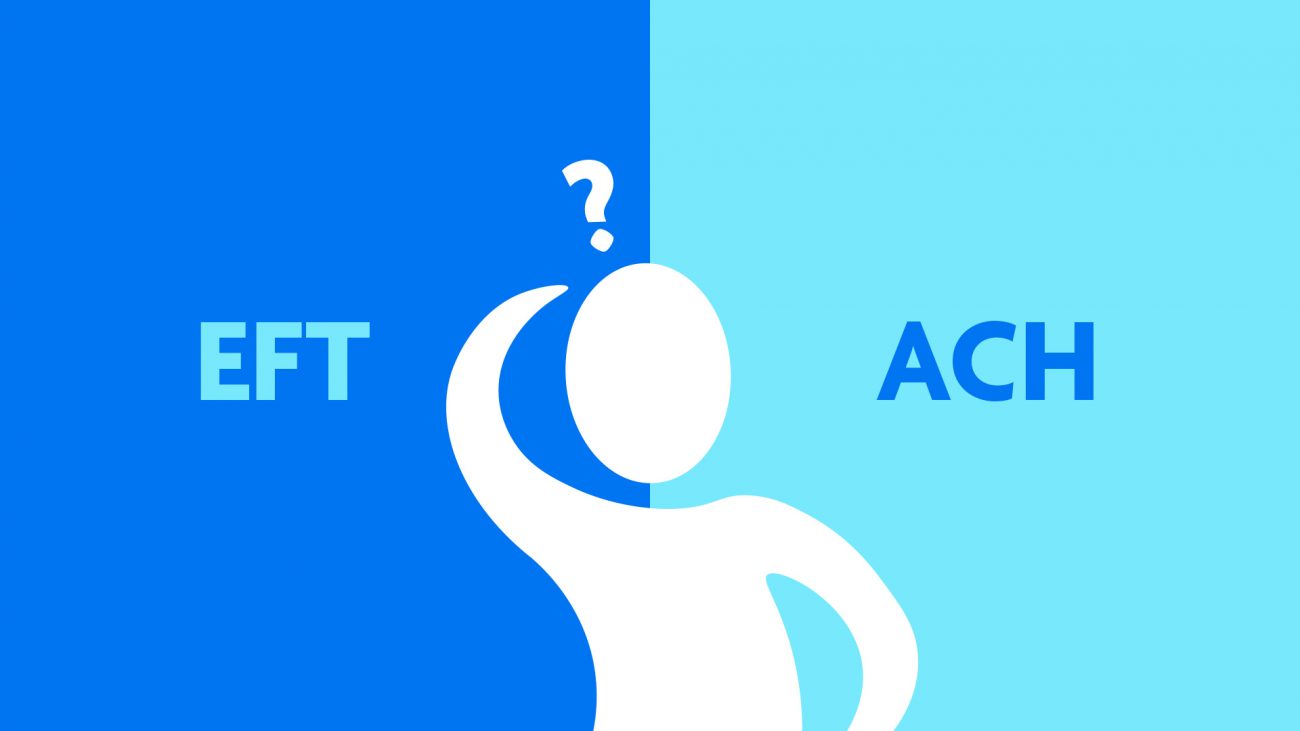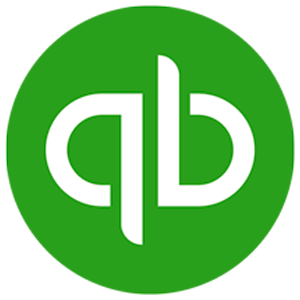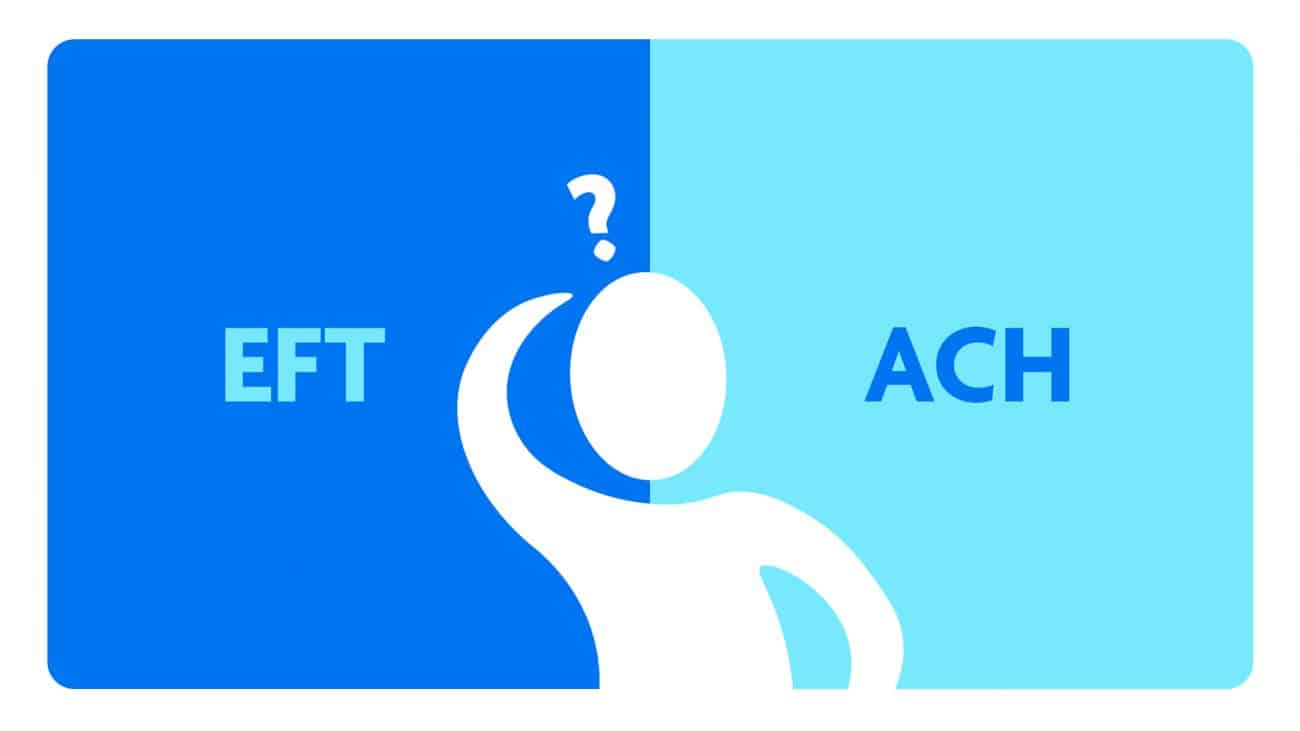Interview with Karen from Compass CPA
For the first episode of In the Clouds, we sat down with Karen Hallson-Kunndel from Compass CPA to discuss what it means to work as a cloud accountant. Even though Karen has a physical location for her business, she has been using cloud-based tech since the beginning of her practice. She says that because the simple things are now automated, she and her team can focus on helping smaller businesses increase their value and performance and achieve their goals.
Watch the full interview:
Ryan Lazanis on cloud accounting: In the Clouds
There's an unprecedented shift taking place in a timeless industry that, in many ways, has been stagnant for many years.
Cloud-based tech is changing the daily grind of accountants and bookkeepers, to the extent that many are no longer working on a desktop computer, in an office building, Monday to Friday, from nine to five.
In our series, In the Clouds, we'll dive deep into the world of cloud accounting in hopes of providing the answers not yet easily found online. We're meeting with some of the leading voices in this space to learn what it means to work “in the clouds”.
Ryan Lazanis is a prominent leader in this space. He founded Xen accounting: one of Canada’s first cloud accounting firms. Within five years his firm was acquired by a global professional services provider.

Now, on the other side, Ryan's current venture Future Firm provides resources (like this article, featuring us, and 130 other cloud accounting software apps) and mentorship to current cloud accountants and bookkeepers wanting to modernize their practices.
Rotessa: Let's start with answering the question of 'what is cloud accounting?'
Ryan Lazanis: When that term (cloud accounting) first started, it was just about using cloud-based apps. I think it has now evolved to more than just using cloud technology.
For me, a cloud accounting firm and a modern accounting firm is the same thing — where you have to be using technology that helps automate your processes. You have to have some sort of business model in place that is scalable, and getting business from more than just referrals.
You don't have to necessarily be a fully remote firm to be a cloud accounting firm, in my opinion. I know of some firms that have an amazing culture, that are very modern, and have a physical presence. Different strokes for different folks.
You just have to be applying some modern practices to your firm to be what I consider a cloud accounting firm.
Rotessa: Is there still hesitation amongst accountants and bookkeepers about going completely cloud-based?
RL: I don't think you need to be completely cloud-based in this day and age. I think what is preventing it is the lack of thought put into a business model.
If you look at most firms from 10 to 20 years ago, you would take any work that comes at you. You'll take this work, that work, whether it fits in your wheelhouse or doesn't - just no model whatsoever. Therefore, there is no efficiency, nothing is streamlined, and it is just about churning out files.
What I think is preventing people from adopting that more modern approach is being intentional about the model you want to have. Like, have a few core services that you offer and do those really well and turn away the things that don't fit into that approach.
Rotessa: It's interesting that you say you don't really identify as an accountant, but more as an entrepreneur. Do you think that is a common theme throughout the cloud accounting space?
RL: I would say I am on the far end of the spectrum of not liking accounting and tax. A lot of the cloud accounting firm owners are more entrepreneurial in nature, in my opinion, than more of the traditional firm owners - I am making a generalization here, but that is kind of what I have noticed. I think a lot more of those traditional firms are practitioners and they're doing tax returns and getting files out the door.
Cloud accounting firm owners are rethinking a business model. They're rethinking how accounting should be done. They're focusing on the customer and determining where there is friction and how they can alleviate that through technology processes.
Rotessa: What do you see as the future of cloud accounting?
RL: It's hard to predict the future, but we are seeing more and more automation happening.
There has been a lot of buzz for the last few years about AI and blockchain taking over everybody's job. Is that really going to happen? It hasn't panned out yet, but it is transforming the industry and the way things are done. But, who knows how long it will actually take to completely replace someone, if ever.
What is changing is client expectations. Clients are expecting an easier experience now - an uber experience. When you can just pick up your phone, press a button, and something comes to you immediately, clients expect that. You are seeing firms having to tailor their approach to changing expectations.
I think the focus will be on the customer journey, identifying the points of friction, eliminating that friction, and trying to make the customer experience more enjoyable in the accounting process.
Subscribe for updates to In the Clouds.
"You have to be invested": Amy from Howe Fit
Fitness has always been a part of Amy Howe's life.
"I have always been super active as an athlete in high school and college," Amy says. "Naturally, I was really drawn to fitness, health, and wellness."
At 19-years-old, Amy was already training others wanting to get healthy at local gyms and fitness centres available for rent. "Since then, I haven't stopped."

After being in business for 14 years, Amy says 2018 was one of the biggest years for How Fit: "I felt like Howe Fit grew a lot. I was named the Muscle Insider top 10 trainers of the year for Canada and then I won Ms. Health & Fitness which is an international competition."
"That was a pivotal year to kind of push us in a direction to where we're going to where we are right now."
These accomplishments may appear to be solely won by an individual, Amy says the credit should be shared: "I would say that although I started this company so long ago, it's not just me that makes it awesome anymore - I'm kind of in the background now."
"We have a really stellar group of trainers, front desk staff, managers, salespeople, that makes Howe Fit as awesome as it is now."
Now, in a more managerial role, Amy finds herself talking less about building muscle than she is building marketing campaigns.
As a mother of two, and now with a strong team of 30 behind her, Amy works mostly from home. "I do all of the nutritional coaching for both locations which is about 30 or 40 percent of Howe Fit."
"I am probably still putting in a good 50 to 70 hours a week behind-the-scenes with marketing, ordering, staff schedules, sales, our website and social media."
With over 3,000 likes and followers on her social media, this self-taught marketer is doing well. "I do a lot of reading and try to absorb as much information as I can from other people that have more creative backgrounds to apply to Howe Fit as best as I can."
Amy's advice for other business owners? "You have to be invested."
"I don't find that anyone has as much interest or heart as you when it comes to your brand and product."
And, once again, its the reliable team that makes Amy's die-hard commitment to her business possible: "When you find good staff, treat them well."
"Nothing works unless you have people who are trustworthy, passionate, and are able to represent your brand well."

Amy and her husband joke about her building an empire, but they may not be far off as they are set to move into a brand new building in Kingsville this year.
Even with hundreds of customers and multiple locations, Howe Fitness has used Rotessa since the beginning. The ability to avoid high credit card fees and use that money to build the business has been "way easier" for Howe Fit.
"I am grateful we have advanced as quickly as we have ... It's been a lot but I wouldn't change anything."
To stay connected and learn more about Howe Fit and Amy Howe visit their Facebook and Instagram pages.
Keep your account and password information safe
It's a serious business dealing with money and bank information online. At Rotessa, we use the latest technology in SSL online security and encryption, but you also have a part to play in keeping your information secure.

What is phishing?
Phishing is a type of fraud in which a hacker attempts to gather personal information or credentials by impersonating a legitimate brand and sending users to a malicious website.
What usually happens is this: A hacker sends an email that appears to come from a trusted brand – like Rotessa – asking the user to log in or change the password for their account. When the user clicks on the link in the email, it would take them to a fake Rotessa login page. This is where they would gather your information.
When a hacker uses the right colours and logos both in the email and on the phishing page, it can be difficult to determine what's real without the right tools.
Never share your Rotessa account password with anyone - not even Rotessa!
The password you use to login to Rotessa and edit users, schedule transactions, export settlement reports and more should only be known by you. We do not know your password and we don't want to know it.
You will never be asked to send your password to us through an email. For any online service provider – not just Rotessa – you should go to the original website and verify or change your account information there.
Double-check who sent the email
Phishing emails can look legitimate. They might even say they're from a trusted company!
Hackers can "spoof" a legitimate company name as the email sender to look like it came from [email protected]. But the email underneath is actually a random address like [email protected].
If you're unsure about an unwarranted email, asking for your account information, make sure to expand the sender details in that email.
Don't let anyone intimidate you
Emails that have an aggressive tone or claim that immediate action must be taken to avoid terrible consequences should be considered a potential scam.
Phishers often scare people into giving up confidential information. An intimidating or scary email saying that your account is locked or that an invoice must be paid to avoid a suspended account is not going to come from us.
Contact Rotessa Support if you ever receive a weird email or have questions about your account information. We're here to help!
Check out our Security Standards Overview if you have any questions about how we keep your information secure.
Reid & Miller CPA and Rotessa
"I don’t have to phone my customers and say ‘where’s your check this month?’ It comes out of their bank — they’re happy, I’m happy!"
Reid & Miller CPA prides itself on creating an environment and relationship in which clients see their accountants as a comfortable addition to their team. Rotessa has served the Winnipeg-based accounting practice since 2015. Since they don't have to deal with collections, they can continue paying attention to their clients' needs.
EFTs vs ACH - What's the Difference?
You’ve probably heard the terms Electronic Funds Transfers (EFTs) and Automated Clearing House (ACH) used interchangeably before. But did you know they're not exactly the same thing? In this article we're going to look at EFTs vs ACH, how they're different, and discuss the best term to use between them.

So What's the Difference With EFTs vs ACH?
Technically all ACH transfers are EFTs, but not all EFTs are ACH transfers.
It’s sort of like how all Kleenex are facial tissues, but not all facial tissues are Kleenex. People use the name interchangeably, but ACH refers to a very specific system in the US called the Automated Clearing House (ACH). But EFTs refer to a broader payment category.
What is an EFT transfer?
An Electronic Funds Transfer is really just the broad term that applies to all kinds of electronic payment methods. EFTs can include ACH, Wire Transfer, E-Checks, Automated Teller Machines (ATM), and debit/credit card transactions. In 1978, United States President Jimmy Carter passed the Electronic Funds Transfer Act (EFTA) which is “intended to protect individual consumers engaging in electronic funds transfers.”
Confusion in Canada
Canadians often misuse the term ACH because so many payment companies service clients in both the US and Canada. But Canada actually runs on their own system called the Automated Clearing Settlement System (ACSS). But no one really talks about processing an "ACSS" transaction the same way ACH is referred. That would be too simple! Many Canadians use EFTs and ACH terms interchangeably, falsely thinking that EFT is just the Canadian version of ACH. But before we get too deep down the rabbit hole, let's first talk about the Automated Clearing House (ACH) network.
ACH Network
The Automated Clearing House network securely coordinates a system of batch payments across the US' various banking institutions. Instruction files sent in a daily batch move funds accordingly. This allows for thousands of individual transactions to be scheduled at once. Unlike wire transfers, ACH transfers don't operate with "cleared funds," which means transactions aren't instant. ACH payments only work with US financial institutions connected to the ACH network processing USD.
What is an ACH transfer?
An ACH transfer takes place when a customer gives authorization to an originator in order to deposit or withdraw money directly from the customer's bank account. For this reason, ACH transfers are also known as pre-authorized debits (PADs) or pre-authorized payments (PAPs). The business has gained “pre-authorization” from the customer to debit/credit their account according to the payment agreement. Most of the time when businesses say they "collect ACH" or "accept ACH," they mean that they electronically collect PADs on the ACH network.
EFT vs ACH: Is there a better term?
So far we've established that an ACH transfer is a form of EFT payment done specifically in the United States. ACH transfers are really just PAD payments. PADs are available in a variety of countries no matter the payment network.
So Pre-Authorized Debit (PAD) is the universal term we should all start using, whether you live in Canada with the ACSS network, or America with the ACH network.
For a beginners guide to understanding more about pre-authorized debits, check out our video series here.
LiveCA and Rotessa
"Right now we're saving over $13,000 a month and as we get bigger, I couldn't imagine anything except using Rotessa."
LiveCA is a completely cloud-based accounting practice. Chad and his team of accountants have been using Rotessa since 2013 – saying its the foundation of their payments system. As they work remotely, LiveCA gives its employees and the companies they serve a chance to focus on one of their core beliefs: there is more to life than work.
Are pre-authorized debits secure?
Pre-Authorized Debits are very secure due to the electronic protocol required by banks. All of the information is encrypted and sent through Canada’s federally-secured Automated Clearing Settlement System which means it can’t be redirected, read, or tampered with.
Pre-Authorized Debits are also regulated by the Electronic Funds Transfer Act, which details the rights and liabilities of Pre-Authorized Debits. Pre-authorized debits also have a very clear mandate to ensure any unauthorized debit can easily be reversed through the bank.
What are Pre-Authorized Debits (PADs)?
What are the advantages of Pre-Authorized Debits?
What kind of businesses are best suited to use authorized debits?
How do pre-authorized debits work?
Are pre-authorized debits secure?
How do I start accepting pre-authorized debits?
What is an authorization and why do I need it for pre-authorized debits?
How long do pre-authorized debits take?
What to know about pre-authorized debit rejections.
How do I start accepting pre-authorized debits?
To start accepting Pre-Authorized Debits, you will need to sign up with a Pre-authorized debit processor. This will either be your bank or a third party.
Some banks offer this solution as part of their larger cash management platform. Every bank has different requirements for setting up an account.. Typically banks work best with large transaction volumes and are best suited for enterprise clients. However, banks don’t offer API solutions for custom integrations. You can expect a sign up fee, monthly fees, and batch fees.
The second way is to sign up through a Third-Party Payment Processor, like Rotessa. Third-Party processors are usually more accessible to small businesses, have a better customer experience, and offer advantages such as APIs and other integrations.
Once you’re setup with a processor, you can offer your customers the convenience of automatic bank payments. This all starts with a simple authorization to outline the payment terms.
What are Pre-Authorized Debits (PADs)?
What are the advantages of Pre-Authorized Debits?
What kind of businesses are best suited to use authorized debits?
How do pre-authorized debits work?
Are pre-authorized debits secure?
How do I start accepting pre-authorized debits?
What is an authorization and why do I need it for pre-authorized debits?
How long do pre-authorized debits take?
What to know about pre-authorized debit rejections.
An overview of pre-authorized debit payments (PADs)
Pre-authorized debit payments (PADs) are electronic, and allow your business to withdraw money directly from your customer’s bank account.

The term pre-authorized refers to an agreement between your business and your customer. In the agreement, the customer will give permission for you to withdraw money from their account based on the terms outlined. This can work for recurring payments on a set schedule and for variable amount payments.
Pre-Authorized Debits work over a computerized network through Payment Canada’s federally-secured Automated Clearing Settlement System. This network connects all of Canada’s financial institutions.
Once you have an account set up with a processor, the first step is to collect a PAD agreement from your customer. This agreement outlines the payment terms and gives you the proper authorization to initiate payments.
Next, you can set a transaction schedule based on your payment terms. Payment instructions are sent to the bank one day in advance of the process date, the details are exchanged within the Automated Clearing Settlement System (ACHSS) and the appropriate funds are withdrawn from your customers bank account, and deposited to yours.

What are the advantages of using pre-authorized debit payments?
There are 3 advantages for business owners to collect payments through pre-authorized debits.
- They are automated. PADs can be scheduled in advance so you never have to worry about getting paid. On the scheduled dates, payments are withdrawn from your customer’s bank account.
- You gets to initiate the payments. As a business owner, you never have to wait on customer initiated payments and you won’t have to chase them down for being late. This will result in improved cash flow and a much better relationship with your customer.
- Cost savings. Most PAD processors charge a flat rate per transaction, not a percentage like credit cards. This can save you hundreds, or even thousands of dollars every month.

Are pre-authorized debits secure?
Pre-Authorized Debits payments are very secure due to the electronic protocol required by banks.
All of the information is encrypted and sent through Canada’s federally-secured Automated Clearing Settlement System which means it can’t be redirected, read, or tampered with.
PADs are also regulated by the Electronic Funds Transfer Act, which details the rights and liabilities of PADs. In addition, PADs have a very clear mandate to ensure any unauthorized debit can easily be reversed through the bank.

How to start accepting pre-authorized debit payments.
To start accepting PADs, you will need to sign up with a pre-authorized debit processor. This will either be your bank or a third party.
Some banks offer this solution as part of their larger cash management platform. Every bank has different requirements for setting up an account. Typically banks work best with large transaction volumes and are best suited for enterprise clients. Banks don’t offer API solutions for custom integrations and you can expect a sign up fee, monthly fees, and batch fees.
A second way to collect PADs is to sign up through a third-party payment processor, like Rotessa. Third-Party processors are usually more accessible to small businesses, have a better customer experience, and offer advantages such as APIs and other integrations.
Once you're setup with a processor, you can offer your customers the convenience of automatic bank payments. This all starts with a simple authorization to outline the payment terms.
Learn more about pre-authorized debit payments by visiting our blog or jump to a specific article through the the links below.
What kind of businesses are best suited to use authorized debits?
What is an authorization and why do I need it for pre-authorized debits?
How long do pre-authorized debits take?
What to know about pre-authorized debit rejections.












